Literary Elements Teaching Resources
Are ou teaching literary elements and looking for worksheets and activities to get students excited about tone, narration, plot and a host of other elements to writing a great story? How do you engage elementary students on the concept of character traits and make plot development as exciting as recess?
The ELA teachers on the Teach Starter team have done just that with a collection of printable worksheets and digital activities built around this core reading standard. Aligned with both TEKS and the Common Core English curriculum, each literary elements activity in the collection has undergone a careful review by a member of our teacher team to ensure it's ready for your lesson plans and your students.
Explore our teacher team's guide to learn more about the various literary elements and how to bring them to life in your classroom!
Is this your first year teaching this sector of ELA? Or the first year in a while? Our teacher team has put together a quick refresher to get you ready to rock and roll in the classroom, including a way to explain what literary elements are to students.
What Are Literary Elements? A Kid-Friendly Definition
First thing's first: Let's talk about the definition.
Literary elements are the basic components of writing that the author uses to share the story with the reader. Without them, the narrative falls apart!
They are sometimes referred to as narrative elements. No matter what you call them, these elements give a piece of writing structure and help the author convey information to the reader.
On the reading side, literary elements are also key to breaking down a story to understand better what the author is trying to say.
What Are Examples of Literary Elements? 8 Examples That Can Help Your Students
There are eight main examples of literary elements that students will encounter in narrative texts:
1. Setting
This element is crucial for developing a story as it provides the time in which the story takes place as well as where it takes place. Setting helps ground the story.
2. Plot
The plot is the way a story unfolds. It's essentially a pattern for the text.
3. Conflict
Conflict helps move a plot forward as it offers the reader a climax to move toward as they read.
4. Characterization
This element of writing covers the way characters are developed within a story.
5. Point of View
Also called narration, this literary element is the perspective from which a story is told, such as first person or third person.
6. Tone
The tone of a story can be boiled down to the author's attitude about the subject of the story.
7. Genre
Genre covers the type of story written, such as realistic fiction, science fiction or even magical realism.
8. Figurative Language
Similes, metaphors, and onomatopoeia are just some examples of the figurative language students encounter in a text.
- Plus Plan

Style of an Author Inquiry Project
Explore the style of an author with this engaging classroom project that helps students analyse, understand and present what makes an author’s writing unique.
- Plus Plan
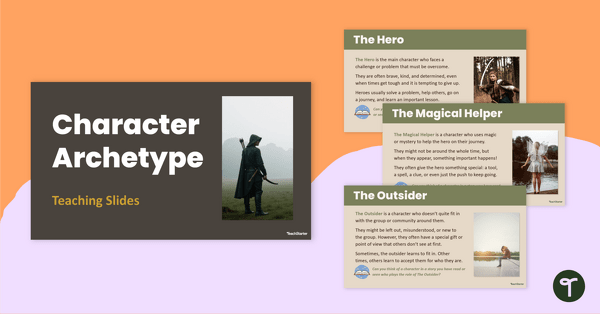
Character Archetypes Teaching Slides
Download this character archetypes slide deck to help your students identify and analyze common character types in literature.
- Plus Plan
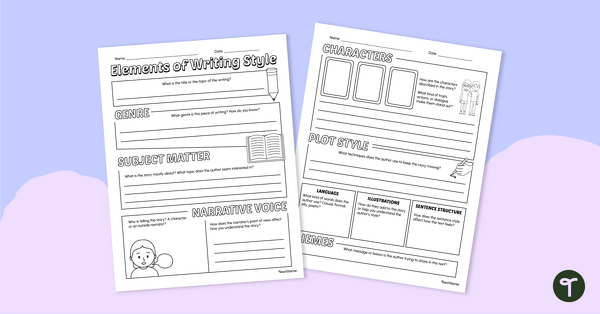
Elements of Writing Style Graphic Organizer
Get your class exploring elements of writing style with this two-page graphic organizer, which enables students to track an author’s choices throughout a text.
- Plus Plan
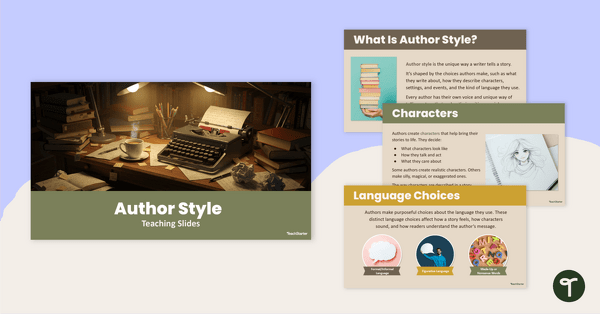
Author's Writing Style Teaching Slides
Teach your students about an author’s writing style with this engaging slide deck that helps students understand the elements that make up an author’s unique voice.
- Plus Plan
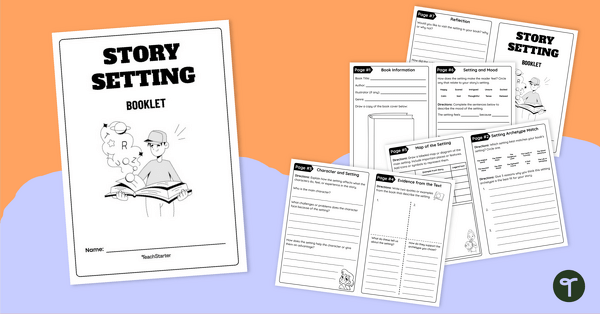
Story Settings Booklet
Explore common story settings in literature with this engaging 8-page mini book that helps students analyze settings from their own reading.
- Plus Plan
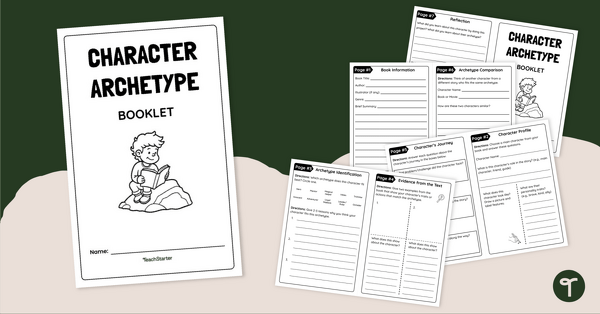
Character Archetypes Booklet
Download this engaging 8-page character archetype mini book that helps students analyze a character from a book they have recently read.
- Plus Plan
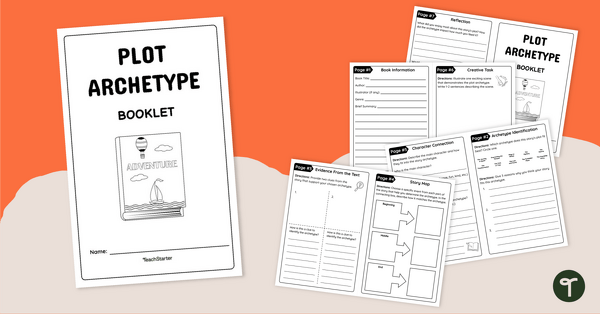
Plot Archetypes Booklet
Explore plot archetypes with this engaging 8-page mini book that helps students analyze familiar story structures.
- Plus Plan
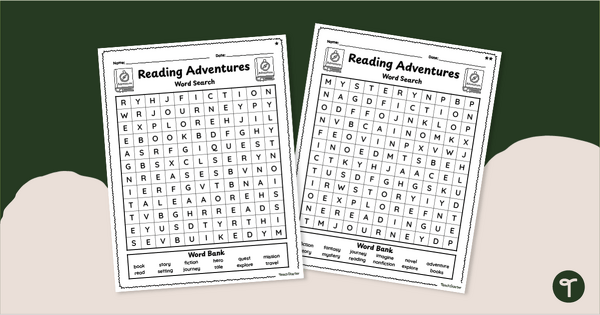
Adventures in Reading Word Search
Kick off a new unit or review literary vocabulary with a printable Adventures in Reading Word Search.
- Plus Plan
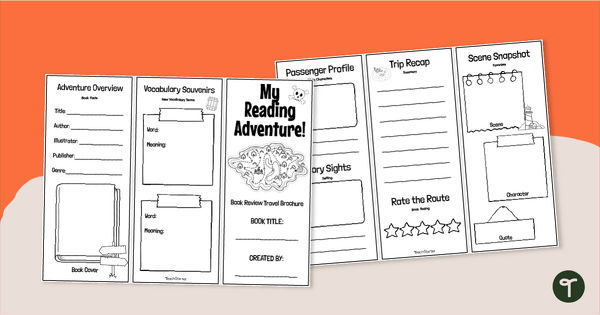
Reading Adventure Tri-Fold - Book Report Brochure Template
Download a book report brochure template and create a fun reading adventure-themed travel brochure.
- Plus Plan
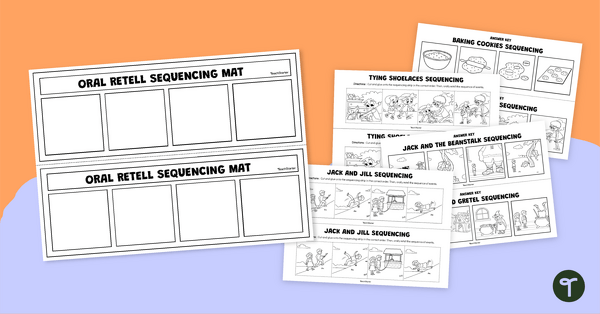
Oral Retell Sequencing Mats
Explore oral retelling with this set of oral retell sequencing mats for a variety of fairy tales and everyday activities.
- Plus Plan

Cultural Context in Literature Doodle Notes
Explore cultural context in literature with this two-page graphic organizer that helps students examine how cultural traditions, values and norms influence texts.
- Plus Plan
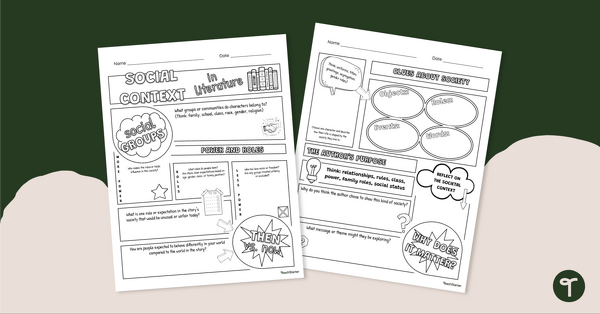
Social Context in Literature Doodle Notes
Support students to explore social context in literature with this two-page graphic organizer that helps them explore societal norms in a piece of literature.
- Plus Plan
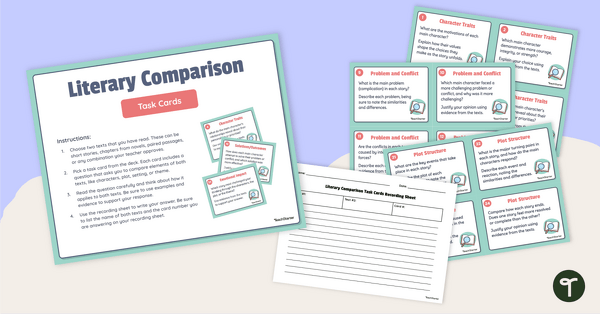
Literary Comparison Task Cards
Encourage deeper thinking through literary comparison with this engaging set of task cards designed to prompt meaningful analysis between two texts.
- Plus Plan
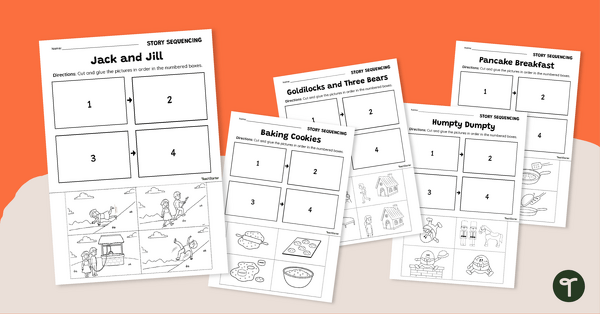
Picture Story Sequencing Worksheets
Help your students build strong visual literacy skills with these Picture Story Sequencing cut and paste worksheet pack.
- Plus Plan
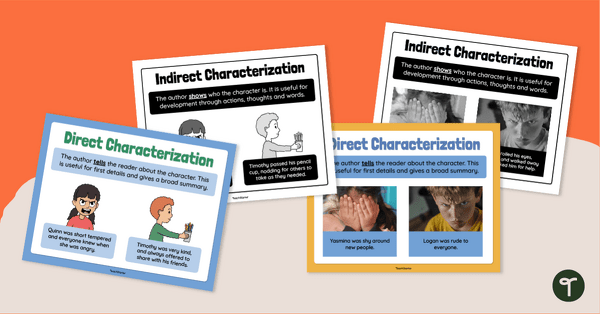
Direct and Indirect Characterization Anchor Chart
Reference a direct and indirect characterization anchor chart to teach your students the difference between types of characterization.
- Plus Plan
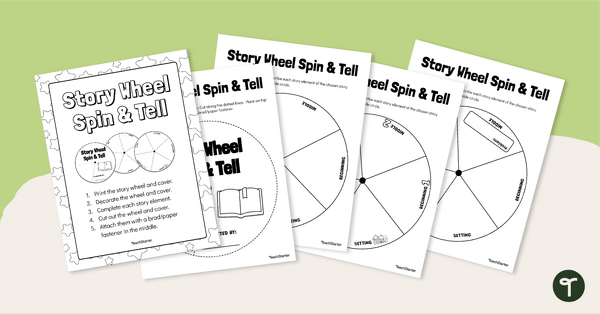
Basic Elements of a Story Spinner Template
Learn the basic elements of a story using this fun and engaging story spinner template for your students.
- Plus Plan
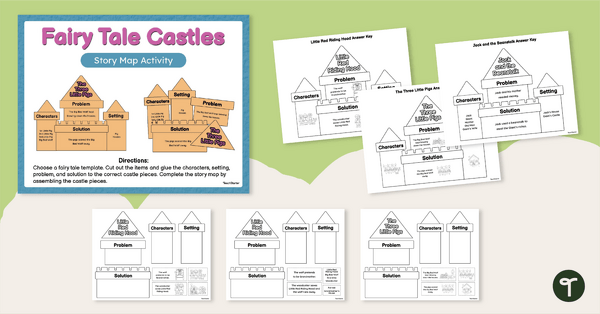
Literary Elements Fairy Tale Sorting Activity
Explore literary elements with this fairy tale sorting activity in the shape of a castle.
- Plus Plan

Story Problem and Solution Matching Activity
Match problems with their solutions to enhance your students' knowledge using this problem and solution matching activity.
- Plus Plan
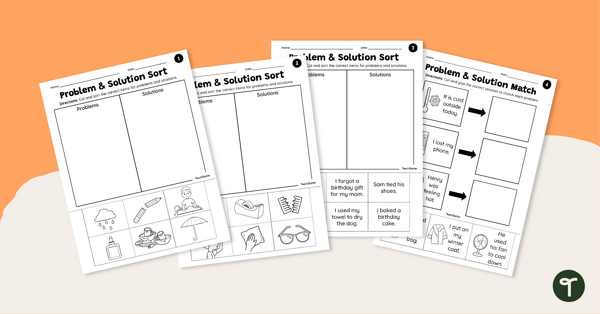
Problem and Solution Worksheets
Explore narrative elements with this set of problem and solution worksheets.
- Plus Plan
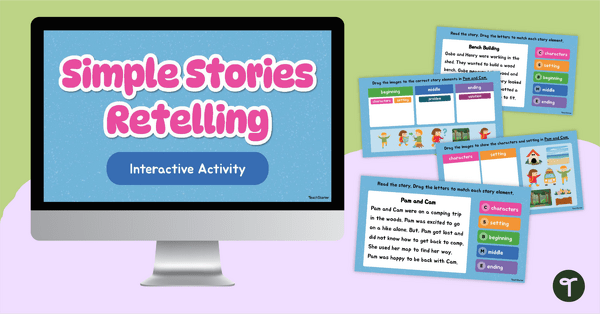
5 Elements of a Short Story Activity
Explore the 5 elements of a short story using this digital activity with five short stories.
- Plus Plan
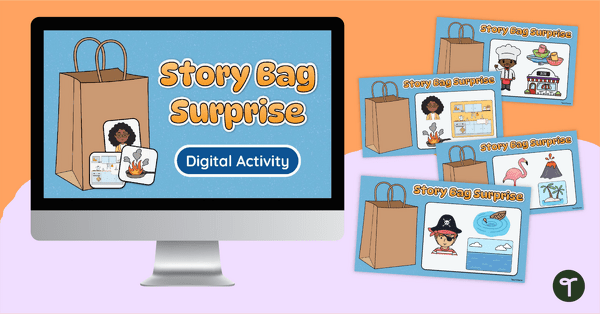
Story Bag Surprise - Story Elements Digital Activity
Introduce and explore different story elements with this story bag surprise digital activity for the whole class to enjoy.
- Plus Plan
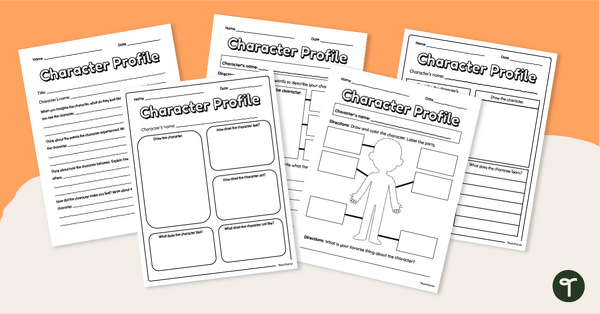
Character Profile Template Pack
Explore the personality, appearance, feelings and actions of a character with printable character profile templates.
- Plus Plan
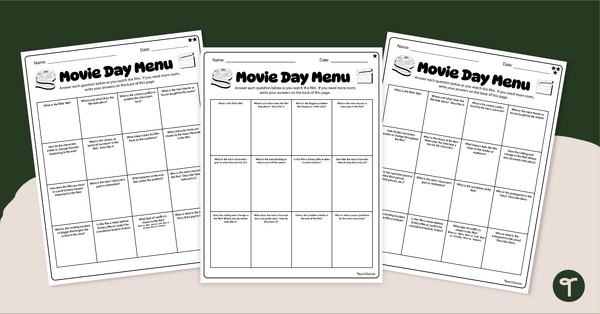
Movie Day Activity Menu
Turn a movie day into a learning experience with our printable Movie Day Comprehension menu.
- Plus Plan
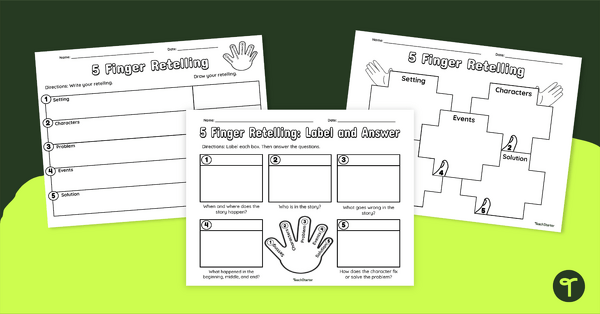
5 Finger Retell Graphic Organizers
Help students sort out their thoughts during retelling with this set of three 5 finger retelling graphic organizers.
- Plus Plan
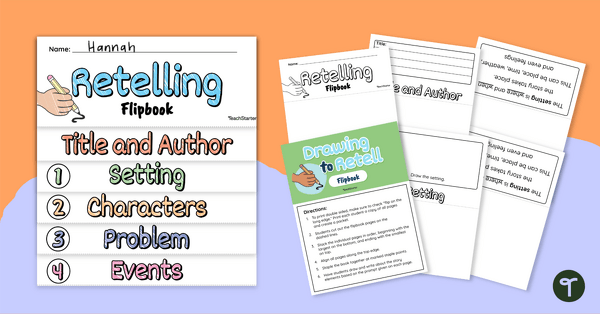
5 Finger Retelling Drawing Flipbook
Help your students understand the different aspects of a retell with this drawing to retell flipbook.
- Plus Plan
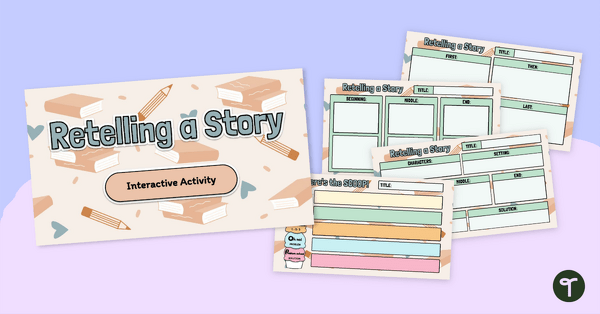
1st Grade Story Retell Interactive Graphic Organizers
Explore the elements of a retell with your students using this digital activity.
- Plus Plan
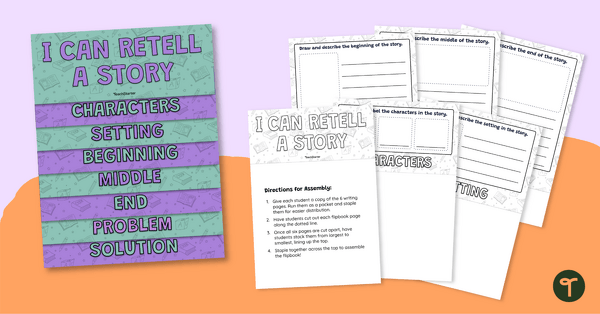
Story Retell Flipbook
Explore retelling a story with your students with this I Can Retell a Story flipbook template.
- Plus Plan
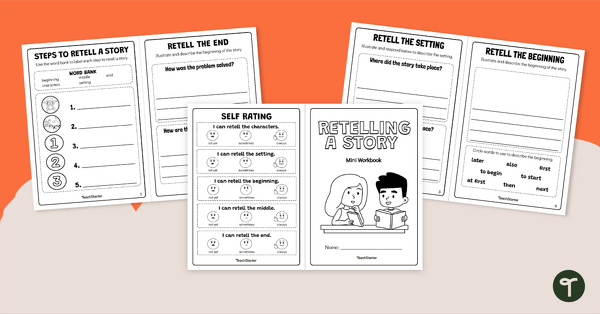
Retelling a Story Workbook
Help your students retain the elements of a retell with this printable retelling stories student workbook.
- Plus Plan
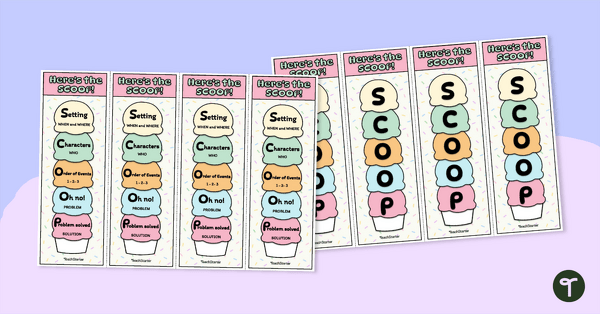
SCOOP Story Retell Bookmarks
Teach your students how to retell using the SCOOP acronym with these handy bookmarks.
- Plus Plan
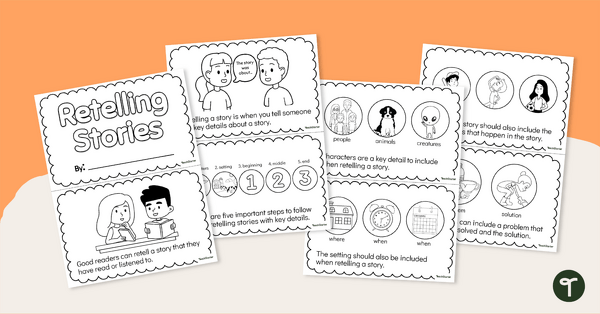
Retelling Stories Mini Book
Introduce how to retell a story using this easy to follow printable mini book.
- Plus Plan

Retelling Stories Wheel Template
Explore story retells with this engaging story retell wheel template.
- Plus Plan

5 Finger Retell Worksheets
Guide your students through using the 5 finger retell strategy with this set of worksheets.
- Literary Elements Worksheets
- Literary Elements Templates
- Literary Elements Games
- Literary Elements Posters
- Literary Elements for Kindergarten
- Literary Elements for 1st Grade
- Literary Elements for 2nd Grade
- Literary Elements for 3rd Grade
- Literary Elements for 4th Grade
- Literary Elements for 5th Grade
- Literary Elements for 6th Grade